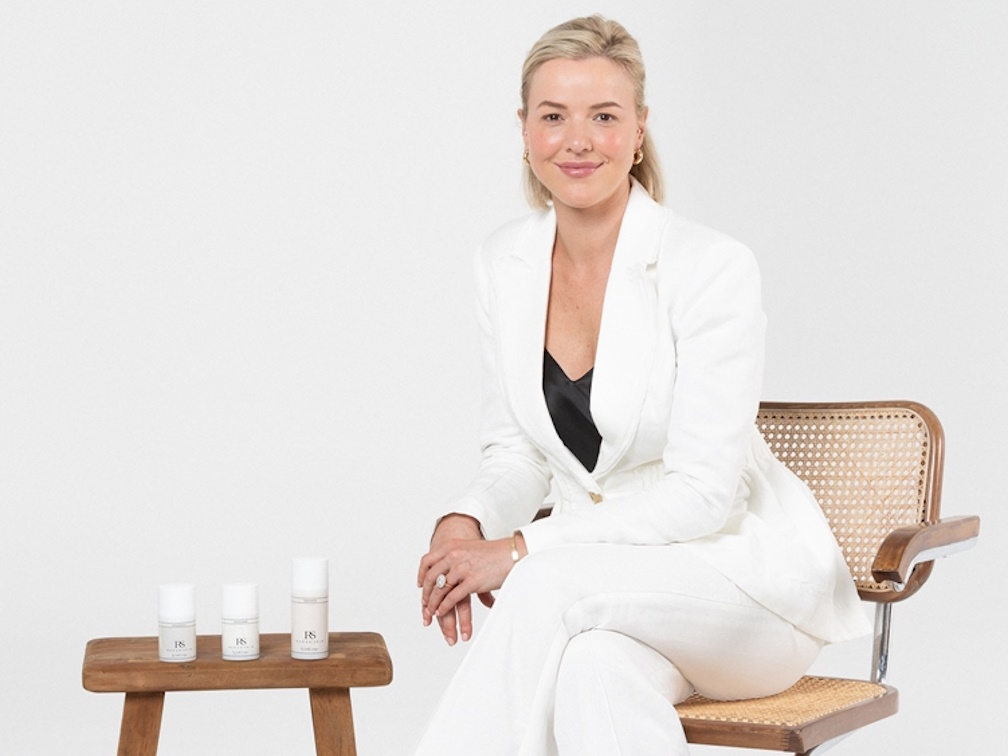LED Face Masks: Fad or For Real?

Leading Skin and Dermal Therapist, Isabella Loneragan, weighs in on the booming popularity of at-home LED light therapy.
Popping on an alien-looking at-home LED mask for a few minutes a day does more than just look space-age cool – these nifty devices stimulate collagen production, reduce fine lines and wrinkles, combat inflammation, and leave skin healthier and glowing, says award-winning skin and dermal therapist, Isabella Loneragan.
But how?
“LED light therapy essentially works by exposing the skin to different wavelengths of light; each of which has a different effect on the skin, and comes with a different colour.
“Generally, I recommend the use of red, near infrared and blue light as most effective.
“Some LED mask varieties offer yellow light which can help to reduce skin-redness, and green light can lessen pigmentation – but these colours won’t do a huge amount of good. Red and blue light are by far the most popular and effective,” explains Isabella.
Red for wrinkle reduction:
“If wrinkle reduction is your main concern, then red light will help to stimulate collagen production, which improves skin elasticity, reducing the appearance of fine lines and wrinkles. It will also help your skin to heal itself by aiding your cells to self-rejuvenate.
Blue for acne treatment:
“Blue light has been shown to be effective in killing the bacteria responsible for causing acne. It can help reduce acne breakouts and inflammation.”
Other benefits of LED masks according to Isabella Loneragan are:
Skin rejuvenation: LED light therapy can help improve overall skin tone and texture, giving the skin a more youthful and radiant appearance.
Wound healing: Near-infrared light may aid in accelerating the healing process of wounds and other skin injuries.
Reduction of hyperpigmentation: Certain wavelengths of light can help reduce the production of melanin, which can be beneficial for treating hyperpigmentation issues like sunspots and age spots.
Inflammation reduction: LED light therapy has anti-inflammatory effects that can help calm redness and irritation in the skin.
Enhanced product absorption: Using LED light therapy before applying skincare products can potentially enhance their absorption into the skin, making skincare products more effective.
Non-invasive and pain-free: LED light therapy is non-invasive and generally considered pain-free. It does not involve any harmful UV rays like those found in sunlight or tanning beds.
“While I do warn against using an at-home LED mask in close proximity to pets and young children because the strays of light can reach them unintentionally, the dangers of LED light therapy are minimal with zero downtime,” says Isabella.
“Some of the cheaper machines do emit light that’s far too hot and so running the risk of too much heat on your skin can cause a whole other raft of issues.
“Generally, the cheaper LED masks don’t work. They don’t have strong enough light to treat your skin.
“Of course, in-clinic LED treatment is preferrable. The LED technology within a good clinic will be worth tens of thousands of dollars with loads of scientific backing and truly remarkable results; especially if done regularly.
“But now more than five years in since at-home LED masks really started to take off as a beauty trend, many brands offer quality LED therapy options and these are usually around the AUD $400 mark. My tried-and-tested top pick is the Omnilux range of LED masks,” adds Isabella.
Isabella Loneragan’s verdict:
“Although at-home LED masks won’t give you the same results you’d achieve from an in-clinic Healite session, they’re an ideal option for use in between appointments.
“An easy way to explain the difference between at-home and in-clinic options is to picture the Healite as a Formula 1 race car and the LED home masks are your Suzuki Swift. Both are driving at full speed and will get you to your destination eventually, however, one will take a significantly longer time to arrive.
“While the results will pale in comparison to in-clinic supercharged Healite treatments, I think integrating at-home LED mask sessions into your daily skincare routine is a fabulous way of ‘topping up’ your in-clinic treatments.
“Finally, it goes without saying that you should always consult with a dermatologist before using products such as LED face masks, especially if you have severe acne or underlying skin conditions.”
Isabella Loneragan holds a Bachelor of Behavioural Health Science & Psychology, with a Diploma in Beauty Therapy and Dermal Science.
Award-winning and internationally trained with almost two decades of experience in dermatology and cosmeceuticals, Isabella is the creator of Ragan Skin and is renowned for her offering of bespoke intuitive facial treatments, including The Intrinsic Facial. Isabella operates a private clinic in Bowral NSW called: Isabella Loneragan Skin.
Find Isabella Loneragan online here (https://www.ilskin.com.au/)
